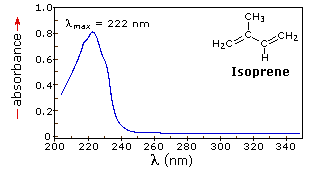It looks like you're using an Ad Blocker.
Please white-list or disable AboveTopSecret.com in your ad-blocking tool.
Thank you.
Some features of ATS will be disabled while you continue to use an ad-blocker.
share:
Saw this question posed on another forum and thought it would also bring some healthy debate here as well.
-Nexusnews
We can see an apple because it reflects red light. A frequency of light we can see. Why is there no object on earth that only reflects a light frequency that we cannot see. Like UV. Let us say that there is an object that only reflects UV or IR frequencies. These objects are real physical objects but cannot be seen by the human eye. Since the earth is supposed to be random, these object should actually exist. Why don't they?
-Nexusnews
reply to post by Nexusnews
They do, flowers use those frequencies to aid in attracting bees. Obviously the Bees sight range is much higher due to being not considered a "conventional" mammal eye, and the plants learned how to look pretty in those ranges too
www.bbc.co.uk...
They do, flowers use those frequencies to aid in attracting bees. Obviously the Bees sight range is much higher due to being not considered a "conventional" mammal eye, and the plants learned how to look pretty in those ranges too
www.bbc.co.uk...
edit on 22-2-2014 by Biigs because: epic spelling mistake
reply to post by Biigs
I think that Nexusnews is talking about an object that's completely only visible in another spectrum.
I think that Nexusnews is talking about an object that's completely only visible in another spectrum.
edit on bSat, 22 Feb 2014 16:21:13 -0600pm52America/Chicago2pmSaturday22America/Chicago by brazenalderpadrescorpio because: (no reason
given)
Things not only absorb light they also scatter it, you don't see gasses of the atmosphere because they don't absorb vis but you see the blue hue they
produce due to Rayleigh scattering.
Also Refraction
edit on 22-2-2014 by Indigent because: Misspelled the dudes name
Also Refraction
edit on 22-2-2014 by Indigent because: (no reason given)
reply to post by Biigs
Well there was another good question posed as well seeking a response which I think directly correlates to the question.
Well there was another good question posed as well seeking a response which I think directly correlates to the question.
How would we know if we see all matter? I'm seriously asking, there are theoretical particles we can't see, I'm not convinced we understand time, and I suspect other dimensions overlap ours at different speeds.
edit on 22-2-2014 by Nexusnews because: (no reason given)
brazenalderpadrescorpio
reply to post by Biigs
I think that Nexusnews is talking about an object that's completely only visible in another spectrum.
edit on bSat, 22 Feb 2014 16:21:13 -0600pm52America/Chicago2pmSaturday22America/Chicago by brazenalderpadrescorpio because: (no reason given)
Exactly.
reply to post by Nexusnews
Is it actually possible for us to build something which our eyes cannot see?
Is it actually possible for us to build something which our eyes cannot see?
reply to post by Nexusnews
I think there's been some attempts in the animal kingdom, like this glass squid;

Most animals, however, find it easier to mimic the common background of their habitats, like white in winter, as a blending strategy.
I think a better question would be as to whether there's any artificial substance that could be manufactured that is opaque only to "invisible" frequencies, or, even better, a substance that can be manufactured that's entirely transparent to everything.
I think there's been some attempts in the animal kingdom, like this glass squid;

Most animals, however, find it easier to mimic the common background of their habitats, like white in winter, as a blending strategy.
I think a better question would be as to whether there's any artificial substance that could be manufactured that is opaque only to "invisible" frequencies, or, even better, a substance that can be manufactured that's entirely transparent to everything.
zilebeliveunknown
reply to post by Nexusnews
Is it actually possible for us to build something which our eyes cannot see?
Yes look at all the telescopes and all the images we get from Hubble. That is pictures overlapped of different wavelengths. Also we have thermal imaging.
-Nexusnews
So far, the spirit world is invisible to every form of detection man has developed.
Unless of course they want you to see them.
regards,
intrptr
Unless of course they want you to see them.
regards,
intrptr
If a subject does not reflect a certain spectrum of light, it absorbs it doesn't it? So, if it absorbs all the "visible light" spectrum (visible by
humans) and only reflects those frequencies that the human eye cannot see, then wouldn't that subject appear black (absorbing the entire "visible
light" spectrum) to a human? Also, it would still block that light, and cast a shadow, would it not?
Trust me there are many things that don't absorb visible like most polymers, pretty much all that is opaque and don't have colors. You can see it
because they scatter light. All polymers absorb uv due to c-c bonds but they need special chromophore groups to absorb visible
For uv spectroscopy quartz is used as it does not absorb in any of the uv-vis spectra and quartz is natural
For uv spectroscopy quartz is used as it does not absorb in any of the uv-vis spectra and quartz is natural
edit on 22-2-2014 by Indigent
because: (no reason given)
reply to post by Nexusnews
Do you see oxygen, nitrogen, CO2, hydrogen or helium, amongst other gases? most molecules are made up of a variety of atoms, which radiate at different frequencies. We see those frequencies we can see, and don't see the ones we can't. And apparently there is no matter made up solely of stuff that doesn't radiate light in are vision spectrum, otherwise there would be be splotches of black every so often that we would bump into.
Next.
Do you see oxygen, nitrogen, CO2, hydrogen or helium, amongst other gases? most molecules are made up of a variety of atoms, which radiate at different frequencies. We see those frequencies we can see, and don't see the ones we can't. And apparently there is no matter made up solely of stuff that doesn't radiate light in are vision spectrum, otherwise there would be be splotches of black every so often that we would bump into.
Next.
I think that the entire model for physics is flawed somehow... Does physics have a lot of matter in their theory? Or do they just call everything
they do not understand "Dark Matter"?
reply to post by Nexusnews
I gave you your answer, there are many things that don't absorb vis in the nature, we see them due to scattering and reflection of light
example:

I gave you your answer, there are many things that don't absorb vis in the nature, we see them due to scattering and reflection of light
example:

edit on 22-2-2014 by Indigent because: (no reason given)
reply to post by Indigent
Think you are missing the point.
So what matter exists in the microwave range?
Why wouldn't we bump into this matter? Does this matter exist in our world or is it in another dimension?
-Nexusnews
Think you are missing the point.
So what matter exists in the microwave range?
Why wouldn't we bump into this matter? Does this matter exist in our world or is it in another dimension?
-Nexusnews
edit on 22-2-2014 by Nexusnews because: (no reason given)
edit on 22-2-2014 by Nexusnews because: (no reason
given)
reply to post by Nexusnews
Maybe they do exist but we are looking for them incorrectly. Perhaps we are looking and trying to see them from the wrong two eyes.
Maybe they do exist but we are looking for them incorrectly. Perhaps we are looking and trying to see them from the wrong two eyes.
reply to post by Nexusnews
Dude you are mistaken, matter is much smaller than light wavelength, and by the way you are going the wrong way the smallest wavelength is gamma rays. here you go
Electromagnetic spectrum
Dude you are mistaken, matter is much smaller than light wavelength, and by the way you are going the wrong way the smallest wavelength is gamma rays. here you go
Electromagnetic spectrum
leolady
reply to post by Nexusnews
Maybe they do exist but we are looking for them incorrectly. Perhaps we are looking and trying to see them from the wrong two eyes.
"We know it exists, it's just we can't see it!"
I heard this phrase number of times coming from scientists when they're speaking about dark matter.
Simple logic would be that there is whole another world governed with different laws of physics.
new topics
-
Thanking a rosemary plant
General Chit Chat: 2 hours ago -
Unidentified Flying Objects Over U.S. Military Bases in Northeast UK, as of roughly 11 a.m. CST.
Aliens and UFOs: 3 hours ago -
Holy Cow! Erm...Six Legged Turkey!!
World Sports: 7 hours ago -
Ben Habib has Left Reform UK
Regional Politics: 10 hours ago -
Turkey Day Rhyme…
Short Stories: 10 hours ago -
Can someone please translate Biden's speech?
US Political Madness: 10 hours ago -
NIH Chief Confesses COVID Initiatives Were "Completely Made Up " OMG Investigates
Health & Wellness: 11 hours ago
top topics
-
Vladimir Putin's speech at the meeting of the CSTO Collective Security Council
World War Three: 14 hours ago, 9 flags -
NIH Chief Confesses COVID Initiatives Were "Completely Made Up " OMG Investigates
Health & Wellness: 11 hours ago, 9 flags -
Can someone please translate Biden's speech?
US Political Madness: 10 hours ago, 8 flags -
Unidentified Flying Objects Over U.S. Military Bases in Northeast UK, as of roughly 11 a.m. CST.
Aliens and UFOs: 3 hours ago, 7 flags -
Awesome Dip Recipe
Food and Cooking: 14 hours ago, 5 flags -
Turkey Day Rhyme…
Short Stories: 10 hours ago, 5 flags -
Ben Habib has Left Reform UK
Regional Politics: 10 hours ago, 4 flags -
Holy Cow! Erm...Six Legged Turkey!!
World Sports: 7 hours ago, 2 flags -
Thanking a rosemary plant
General Chit Chat: 2 hours ago, 2 flags
active topics
-
Thanking a rosemary plant
General Chit Chat • 2 • : visitedbythem -
Unidentified Flying Objects Over U.S. Military Bases in Northeast UK, as of roughly 11 a.m. CST.
Aliens and UFOs • 11 • : TheValeyard -
V.P. Kamala Harris releases a video and nobody understands why
US Political Madness • 93 • : Astrocometus -
Vladimir Putin's speech at the meeting of the CSTO Collective Security Council
World War Three • 64 • : tamusan -
Holy Cow! Erm...Six Legged Turkey!!
World Sports • 4 • : JJproductions -
Why isn't Psychiatry involved?
Social Issues and Civil Unrest • 17 • : lilzazz -
Traveling the world with no passport
Social Issues and Civil Unrest • 12 • : andy06shake -
The Party of Peace - Trump Cabinet Picks Targeted with Death Threats
US Political Madness • 46 • : chr0naut -
Happy Thanksgiving to ATS
General Chit Chat • 14 • : randomtangentsrme -
Awesome Dip Recipe
Food and Cooking • 6 • : Flyingclaydisk
